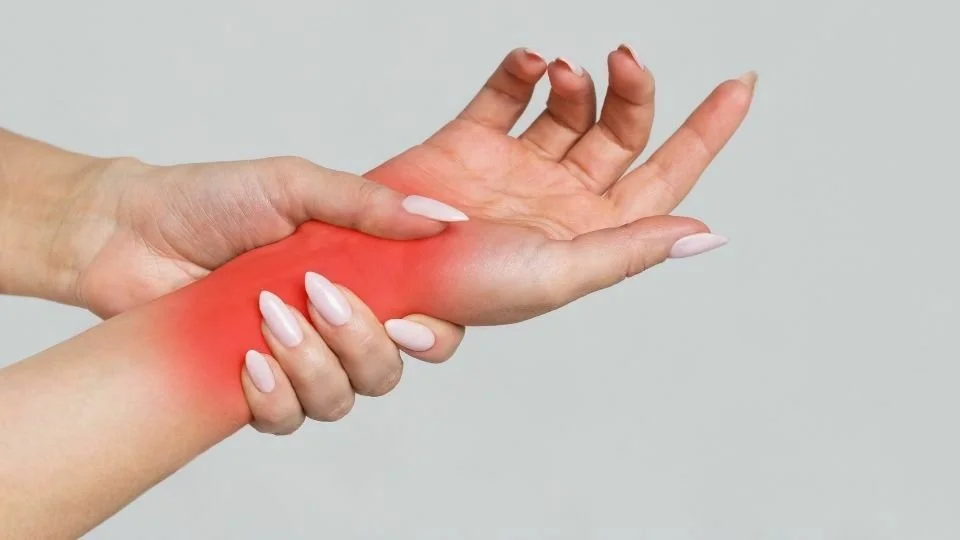Complex Regional Pain Syndrome (CRPS) is one of the most challenging conditions physical therapists encounter—not because patients are non-compliant or difficult, but because the condition itself defies a purely biomechanical approach. And yet, many of us—myself included—were trained to think in terms of joints, tissues, and loads.
When that’s your framework, the natural instinct is to treat CRPS like any other peripheral issue: explain pain, improve range of motion, and begin progressive loading. But if you go down that route too soon, you may unknowingly exacerbate the very system you’re trying to calm.
🔥 You Can’t Rebuild the House Until You’ve Put Out the Fire
When patients with CRPS come to see me after failing a traditional rehab approach, there’s one consistent theme: they progressed too quickly. They were rushed into loading, forced into range of motion exercises, and sometimes told to “push through” the pain.
Here’s the truth: pain in CRPS isn’t just nociception—it’s dysregulation. You’re not just working with stiff tissue or weak muscles. You’re working with a system that’s interpreting movement, temperature, and even sometimes attention as threat.
“If you are forcing movement where there is continuous pain, you are continuing the problem. You are feeding it.”
The first goal of CRPS rehab isn’t motion or strength. It’s nervous system regulation. It’s calming the system down so that it can receive input safely. Only then can you begin to rebuild capacity.
🧠 CRPS Is a True Biopsychosocial Disorder
CRPS involves sensory, motor, autonomic, and psychological components. These systems are interactive, and they modulate each other. But as physical therapists, we often default to the biological: What’s the joint doing? What’s the tissue tolerance? Can they weight-bear?
This bias leads us to overlook critical domains like:
Body schema disruption (patients unsure of where their limb is)
Fear and movement avoidance
Distorted interoceptive and exteroceptive input
Catastrophizing and negative expectations
We can’t load someone out of those.
🛠️ What to Do Instead: A Stepwise Approach
If you're limited to 12 visits (as many of us are), front-loading treatment with manual therapy and exercise may be counterproductive. Instead, use those first visits to lay the foundation for neurophysiologic safety:
1. Reduce Threat with Education + Empathy
Normalize their experience: “This is not in your head, and you’re not broken.”
Help patients understand that pain does not equal damage.
Validate their symptoms while offering hope for progress.
2. Use Graded Sensory and Motor Exposure
Start small: mirror therapy, explicit motor imagery, bilateral movements.
Desensitization: familiar textures, warmth, sound, scent—used positively.
Address neglect: self-portraits, journaling, and visual engagement with the limb.
3. Co-Create a Fear Hierarchy
Identify movements or tasks the patient fears.
Gradually reintroduce them using exposure principles.
Ask: “What do you expect will happen if you do this?” Follow up with, “What actually happened?”
4. Empower Home-Based Self-Regulation
Prescribe short, frequent, low-threat sensory and motor practices.
Emphasize consistency over intensity.
Track changes in pain, color, swelling, and confidence.
5. Time Loading Strategically
When the fire is out, begin loading.
Introduce joint mobs, resistance, and proprioceptive training progressively.
Space visits to reinforce independence and preserve clinical value.
⏳ Don’t Waste the Early Visits
If I only have 12 visits with someone, I want to use the first few for calming and reconnection—not aggravation. I’ll see them once or twice initially, load them up with at-home strategies that focus on retraining safety, and only then begin traditional PT work like joint mobilization and strengthening.
It’s not about doing less. It’s about doing the right thing at the right time.
💡 Final Thought
CRPS doesn’t fail PT. We fail CRPS when we ignore the nervous system and the person behind the pain.
To treat it effectively, we must think beyond tissue and structure—and start treating the whole system.
